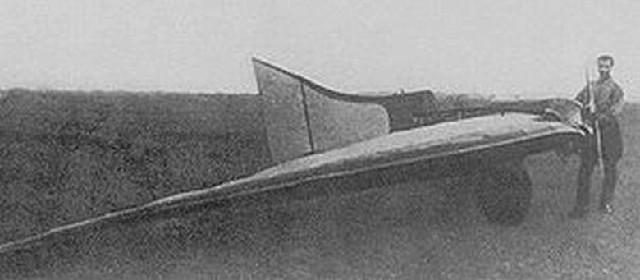










The history of Flying Wings - The Chyeranovskii BICh-3
By Willie Bodenstein


The BICh-3 was flown in Moscow in 1926
Developed from the BICh-1 and BICh-2 tailless gliders designed by Boris Ivanovich Cheranovsky, the BICh-3 was a tail-less powered research aircraft built in the USSR from 1926.

The BICh-3 was a tail-less powered research aircraft. Photo © wikipedia .org.
The BICh-3 was built of wood with a parabolic wing having a straight trailing edge. A central nacelle, containing cockpit and engine, was faired into a large and powerful fin and rudder. The undercarriage consisted of a trousered central mono-wheel with wing-tip skids. The BICh-3 was flown in Moscow in 1926. Tests found it to be unstable, so consequently the handling was improved, after minor modifications, enough for the aircraft to be re-assessed as safe to fly.
General characteristics
Crew: 1
Length: 3.5 m (11 ft 6 in)
Wingspan: 9.5 m (31 ft 2 in)
Wing area: 20 m2 (215 ft2)
Empty weight: 140 kg (309 lb)
Gross weight: 230 kg (507 lb)
Powerplant: 1 ◊ Blackburne Tomtit, 13.4 kW (18 hp)
 |
 |
 Copyright © 2024 Pilot's Post PTY Ltd
The information, views and opinions by the authors contributing to Pilotís Post are not necessarily those of the editor or other writers at Pilotís Post.
Copyright © 2024 Pilot's Post PTY Ltd
The information, views and opinions by the authors contributing to Pilotís Post are not necessarily those of the editor or other writers at Pilotís Post.